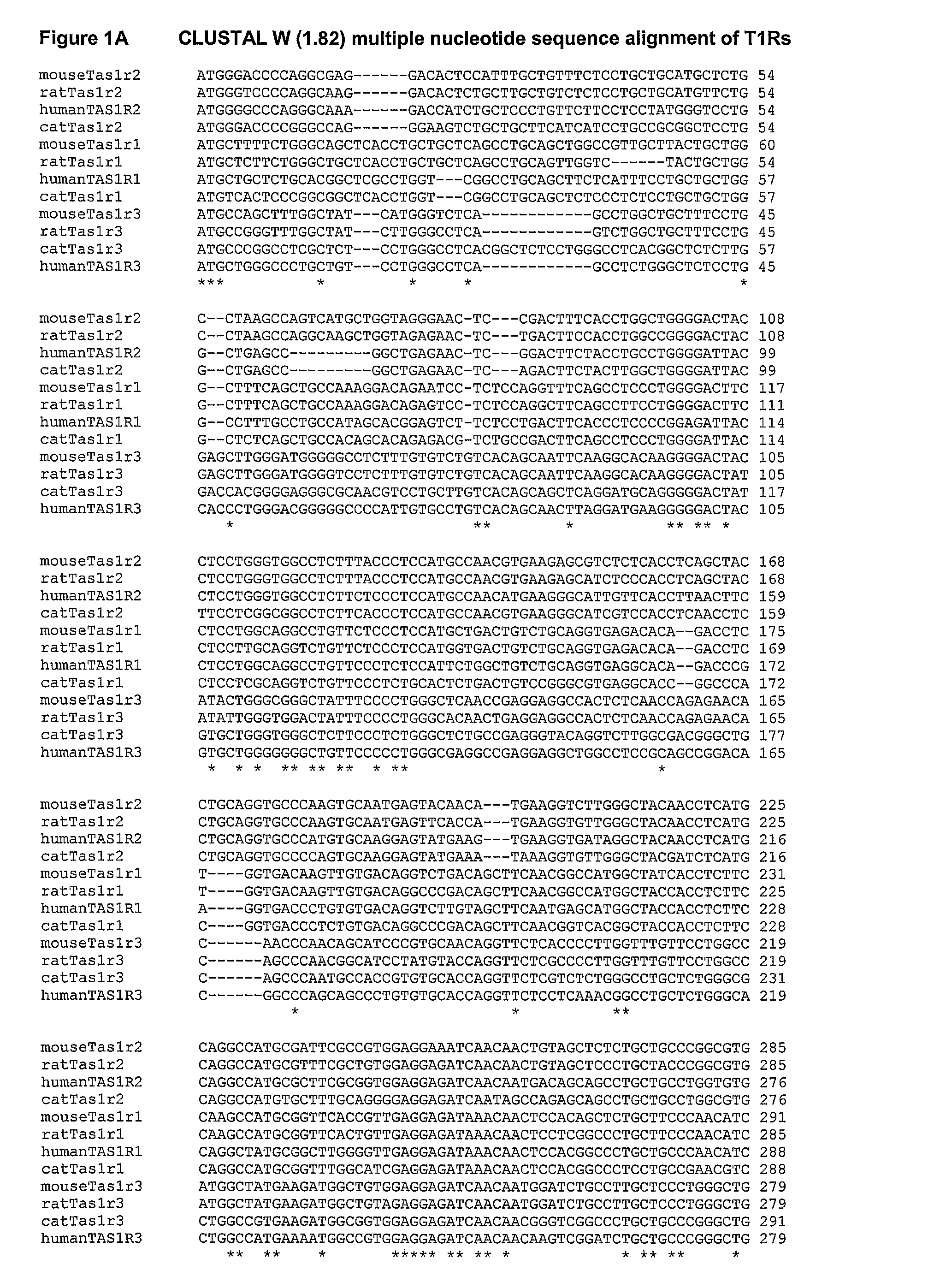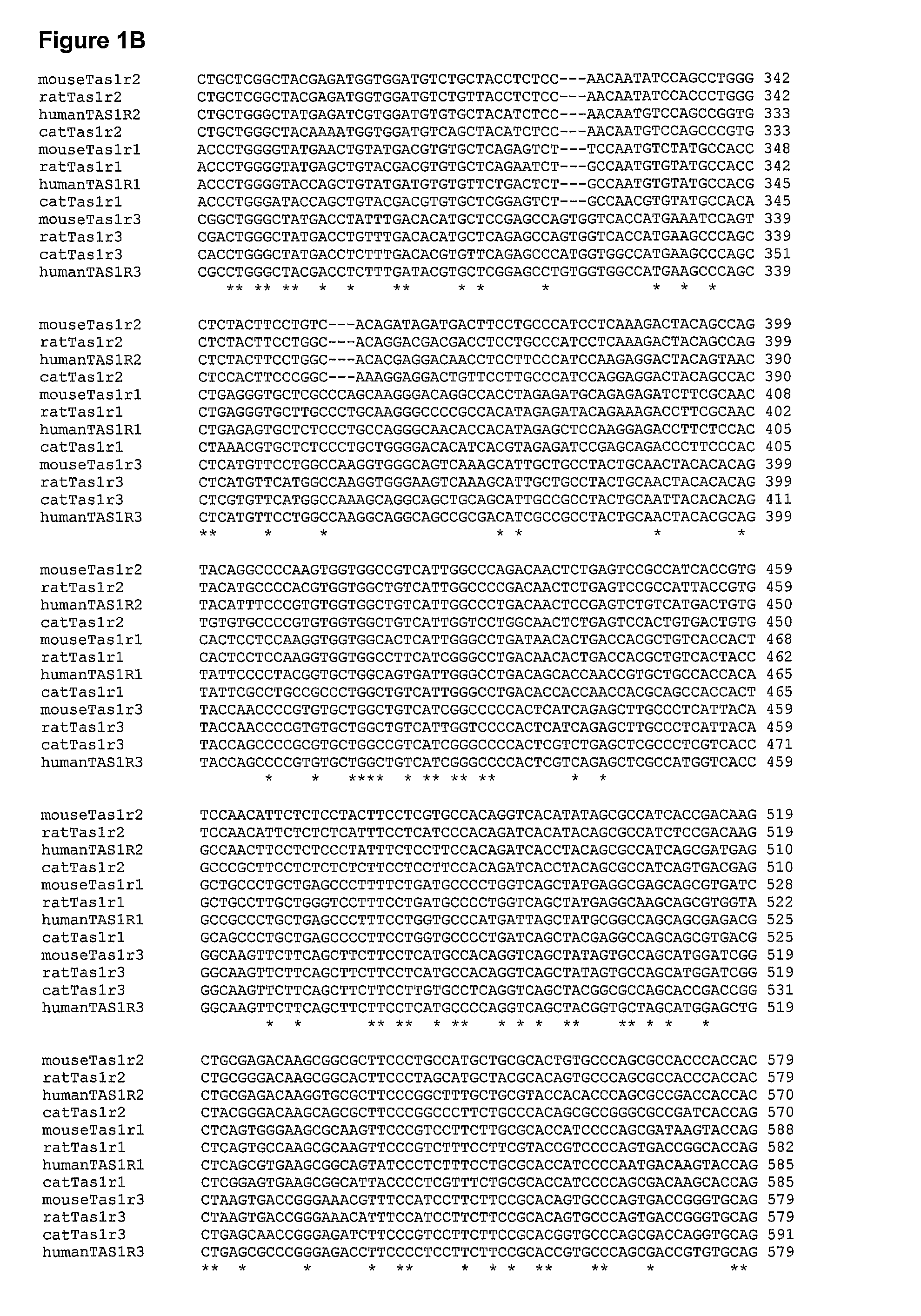Taste receptors of the T1R family from domestic cat
a technology of taste receptors and domestic cats, which is applied in the field of taste receptors of the t1r family from domestic cats, can solve the problems of limited mechanisms for identifying novel taste stimuli for domestic cats, increased feline illnesses, and increased difficulty in detecting new taste stimuli, and achieves high stringency conditions
- Summary
- Abstract
- Description
- Claims
- Application Information
AI Technical Summary
Benefits of technology
Problems solved by technology
Method used
Image
Examples
examples
[0197]The following examples are meant to be illustrative of the present invention and are not intended to limit the scope thereof.
Cloning and Characterization of the Feline T1R3 Receptor
[0198]The discovery of feline taste receptor, T1R3, was achieved by using a molecular strategy termed “overgo” (Thomas, et al., Genome Res., 12:1277-1285 (2002); Vollrath, D., DNA markers for physical mapping In GENOME ANALYSIS: A LABORATORY MANUAL, Vol. 4, ed. B. Birren, et al., pp. 187-215, 1999). Cold Spring Harbor Laboratory Press, Cold Spring Harbor, N.Y.). This strategy involves the use of the shortest DNA probes among the many kinds of probes used in bacterial artificial chromosome (BAC) library screening. These probes are comprised of two DNA sequences (e.g., 22mers) with a complementary 8 base overlap. They can be designed by computer program (available online, for example, through the Washington University School of Medicine Genome Sequencing Center) and are readily synthesized.
[0199]Overg...
PUM
| Property | Measurement | Unit |
|---|---|---|
| Tm | aaaaa | aaaaa |
| temperature | aaaaa | aaaaa |
| temperature | aaaaa | aaaaa |
Abstract
Description
Claims
Application Information
 Login to View More
Login to View More - R&D
- Intellectual Property
- Life Sciences
- Materials
- Tech Scout
- Unparalleled Data Quality
- Higher Quality Content
- 60% Fewer Hallucinations
Browse by: Latest US Patents, China's latest patents, Technical Efficacy Thesaurus, Application Domain, Technology Topic, Popular Technical Reports.
© 2025 PatSnap. All rights reserved.Legal|Privacy policy|Modern Slavery Act Transparency Statement|Sitemap|About US| Contact US: help@patsnap.com



